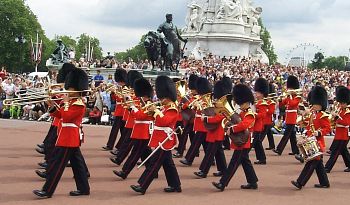London is famous the world over, both as an ancient seat of power for the British Empire, and as a hyper-modern capital of literature, art, music, food, finance, and architecture. The old city itself is only a small fraction of the more recognized Greater London that grew up around it, spanning over 600 square miles. This large region houses a great number of historic monuments and landmarks, alongside large music venues and concert halls, and a bewildering labyrinth of shops, clubs, and restaurants. The style and architecture in London is as varied as its people; just a stone’s throw away from a cozy, cobbled street of family-run pubs and gardens stand vast, glinting skyscrapers of glass and steel; high street fashion stores are interspersed with gothic, stone churches, while neon nightclubs look out over the River Thames towards cathedrals and castles. The mix of old and new styles is often bewildering, sometimes stark, but always leaves the impression of a city steeped in history, while embracing change.
Connecting all of the sights and places of interest scattered throughout London is the world famous London Underground, known locally as "the tube". You can purchase tickets for a single journey, or buy a day ticket which lets you use all the tubes and buses in London for a whole day, making it extremely handy when bouncing around shops or art galleries. The other commonly used mode of transport is the black cab taxis, which are similar to those in New York. Be careful about traveling too far in a cab, as the prices can become quite steep, especially if you hit traffic.
A tour of London’s sights is best spread over several days, as there is a tremendous amount of places to visit and a lot of walking involved to see it all. The most significant historical landmarks include: Buckingham Palace, the seat of British monarchy and home of The Queen of England; St Paul’s Cathedral, one of England’s most famous attractions; Westminster, containing The Houses of Parliament and The Tower of Big Ben; and the Tower of London, a massive English fortress, and the home of the Crown Jewels.
If this venerable heritage is not to your tastes, why not take a tour of the world-class art exhibits such as the Tate Modern, the Tate Britain, or the Saatchi Gallery? There are also a number of museums to indulge all interests, from science to natural history, and large gardens and parks to enjoy. Get a view from the Millennium Eye, the gigantic Ferris wheel overlooking the Thames, or stop at Trafalgar Square to admire Nelson’s Column. If shopping is your thing, there are few better places in the world to be. Whether hunting down designer clothes in Bond Street, or wandering through the hippy micro-culture in Carnaby Street, shopping in London caters to all desires. Notable streets to peruse include Notting Hill, Oxford Street, Covent Garden, and Knightsbridge.
There is a rich myriad of entertainment to fill up an evening in London; from theatre, opera, and recitals to concerts, comedians, and art exhibitions. The indispensable magazine "Time Out" lists everything going on in and around London every night, and is widely available throughout the city. The tube runs until a little after midnight for most central stations, opening again at around 5 a.m., so be sure to plan your journeys with this in mind. For the sleepless, the underground transport is replaced by the night bus service, where London Underground tickets are usually still valid.
Accommodation in London is variable, ranging from luxury, 5-star hotels to snug and comfortable bed & breakfast pubs. Be sure to get the latest on inclusive packages and hotel deals, and ask around for personal recommendations. For more information, try visiting our international travel forum to ask questions and get answers before you book your destination vacation.
Author Bio-
"Tina Halford" is a Senior Writer & Journalist working with TripMama. Tina writes articles with special focus on airlines discussion boards, besides sharing travel tips and nuggets on booking air deals, cheap hotels, car rentals and travel destinations.







